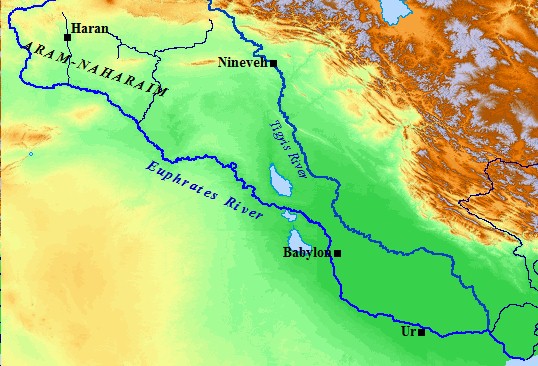The Tigris River is one of the rivers along with the river Euphrates that defines Mesopotamia. The river Tigris is on the eastern side of Mesopotamia which is 1,150 miles long and at its widest point, the Tigris is 1,300 feet, the Sumerians knew the Tigris as the Idigna, which may be translated as “the swift river.”

The name “Tigris” seems a later imitation of the Sumerian name. The Tigris River was known by the Hebrews as “Hiddekel” and is one of the two large rivers of Mesopotamia, which the Bible says, flowed from the Garden of Eden. In reality it is said to be rising from the eastern Taurus mountain range, or Armenia, as it was once called.
Flowing in a generally southeasterly direction, it passed along Amida (modern Diyarbakir), where the Royal Road from Assyria to Anatolia crossed the river, and along Nineveh and Assur. It accepts the waters of the Batman, the Great and Little Zab, and the Diyala.

At the confluence with the latter, the city of Opis was built, which is more or less identical to modern Baghdad. This is the point where the river becomes navigable for shallow-draft vessels; higher upstream; the Tigris is too irregular, although rafts can reach Nineveh.
At Opis, the river reaches the alluvial plain of Babylonia, and turning to the south, it changes into a meandering river. There are not many great cities, because the river is subject to flooding. After all, it receives its water from the mountains of Armenia, where the snows melt in March.
The Tigris flood reaches Babylonia in May-June, which is at a very unlucky moment, because the harvest is in April. Besides, the flood of the Tigris, which receives rain water from the Zagros through its tributaries, can be extremely violent and unpredictable, and can hardly be controlled.
The result is that already in the fourth millennium; people were building dikes and digging canals. It is often said that this was one of the roots for the rise of cities and monarchies
In ancient times the courses of the Tigris and Euphrates were separate. The Tigris has a greater volume of water than the Euphrates and flows faster, making upstream navigation impossible.
The area along the river was very marshy, and there were large, brackish lakes. This is confirmed by the fact that in Eridu, fish bones have been found of a species of bass that does not live in a salty climate. The water of the river Tigris was comparatively salty which was in a way hindrance to the growth and development of the most important civilization but then the pros outnumbered the cons.
Along the river were the powerful and prosperous cities of Nineveh, Calah and Ashur flourished along its shores. This region between 5000 and 2000 B.C.E rapidly expanded their land and changed at a quicker pace than other regions.
They all had better agriculture, technology, development of state power and construction of cities. River Tigris had a major role in the development of the most important civilization in the world.